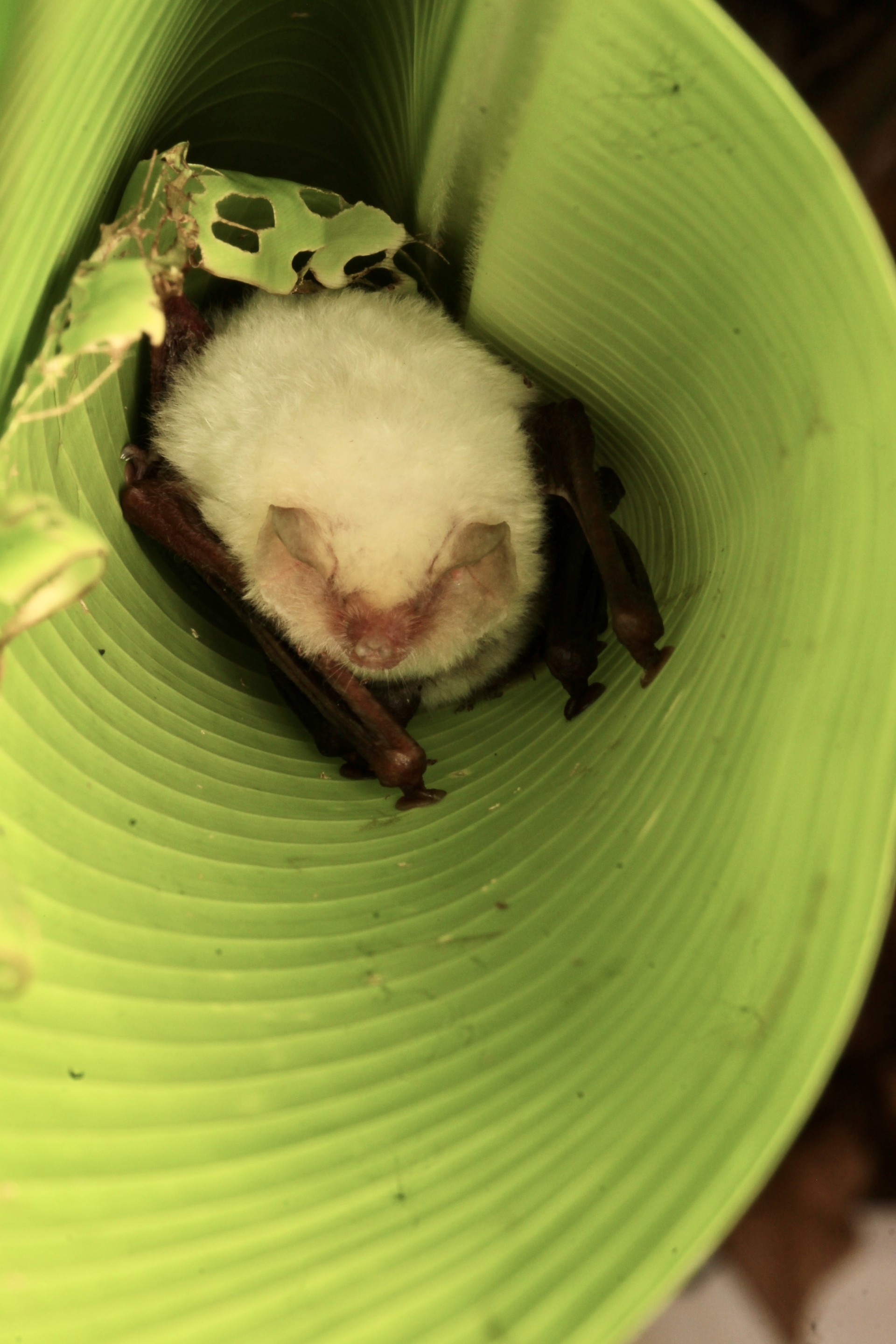Unusually colored animals often turn up where you least expect them, and in all manner of species – from albino anteaters to all-black penguins, genetics can throw a spanner in the works for even the brightest feathers and fur. Now, a Spix’s disc-winged bat has been seen in Belize with beautiful white fur for the first time.
ADVERTISEMENT
Leucism is the absence of pigmentation in an animal’s skin or fur – but, unlike albinism, does not affect the color of the eyes. Until now, leucism had never been recorded in this species – or the entire Thyropteridae family to which the Spix’s disc-winged bat belongs, for that matter. Typically, these bats are dark brown, sometimes with reddish-brown parts on the ears, and white or yellow fur on their bellies. The individuals reported in the paper, on the other hand, are all almost entirely white.
“We haven’t conducted DNA analysis on this leucistic bat yet, but we hope to do so in the future. Leucism is genetically induced and typically a recessive trait, meaning both parents must carry the gene for it to appear in their offspring.” explained first author of the study Vanessa Martin to IFLScience.
Spix’s disc-winged bats have widespread distribution and are found in Mexico, across Central America, and into Brazil. In Belize, however, the species is not particularly common and is found only in four locations. It has a highly specialized roosting strategy and can be found in rolled-up Heliconia leaves. The leaves can only be used temporarily while they are at the perfect size for the opening for the bats to roost – after 24 hours, they become too wide. Commercial harvesting of the heliconia leaves impacts the bats further.

Social groups of 4-14 bats can roost together inside these rolled-up leaves.
Image Courtesy of Vanessa Martin
On March 22, 2023, the team of researchers behind the new discovery observed a small group of these bats falling out of a Heliconia leaf as it was cut. At least one leucistic male was seen in the group, the rest of which quickly made a getaway. With this initial sighting, the wider team was alerted and on the lookout for more all-white individuals. On December 15, a leucistic adult male was captured. The following year, in April, one male bat in a group of four was also found to be leucistic.
The question remains as to whether these bats are negatively affected by their white coats. “Some researchers have hypothesized that leucism could negatively impact bats by making them more visible to predators or affecting their acceptance within social groups. However, other studies have documented leucistic bats reaching maturity and even reproducing, suggesting that leucism may not significantly affect survival or social integration,” said Martin.
“In our case, more documentation of leucism in Thyroptera tricolor is needed to assess its impact on survival or socialization. However, Thyroptera discolor has a naturally white belly, which we hypothesize to be a camouflage strategy, making them less visible inside their Heliconia leaf roost. We speculate that a leucistic individual might not be at a disadvantage, as it wouldn’t necessarily be more visible when inside its roost.”
ADVERTISEMENT
As well as concern about predation there is worry about whether individuals with different appearances will be accepted into the social groups that these bats form. “We didn’t record social interactions, so we can’t say whether its behavior differed from that of its roost-mates. However, the leucistic bat was found roosting within a group of four, suggesting that it was not socially excluded,” explained Martin.
While this hasn’t been seen in the family before, Martin explains that “we conduct mist-netting surveys for bats throughout the year and have noticed that many individuals exhibit chromatic disorders, most commonly piebaldism, which appears as white patches on the skin or fur. We believe these chromatic disorders may be more prevalent than previously thought and encourage researchers to publish their findings, even as short notes, as we did.”
The paper is published in the journal Neotropical Biology And Conservation.
Source Link: Adorable All-White Spix’s Disc-Winged Bat Marks First Record Of Leucism In The Species